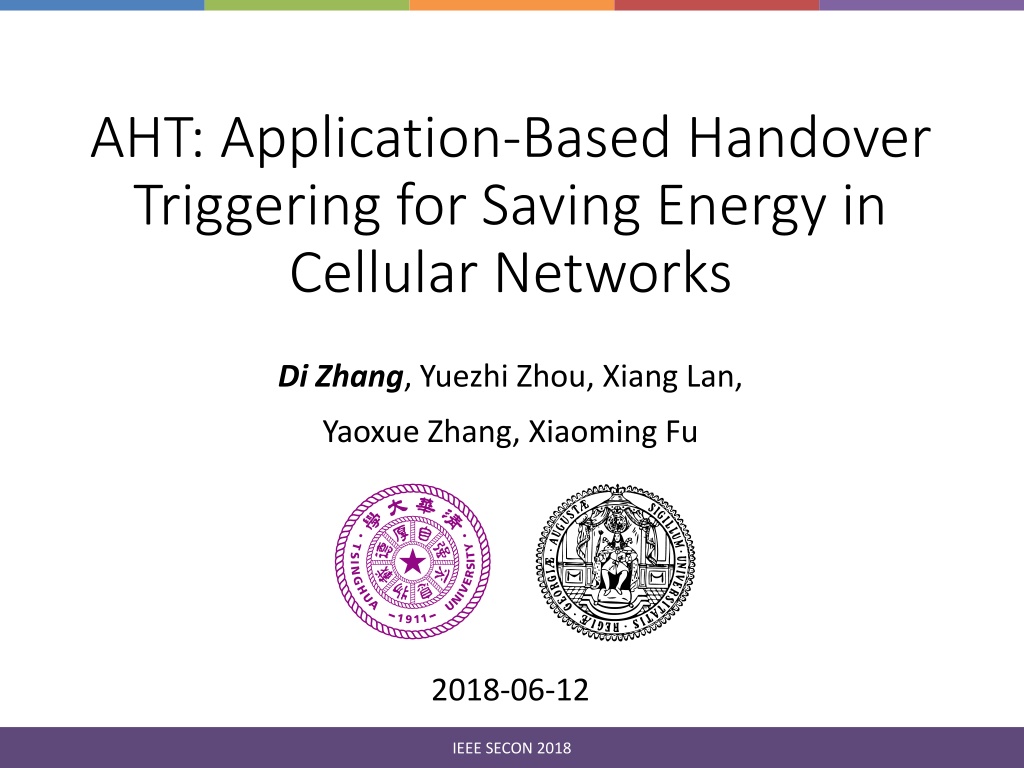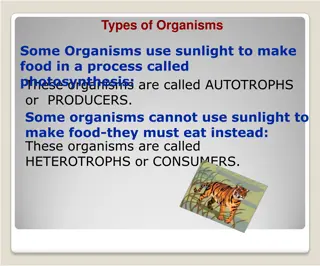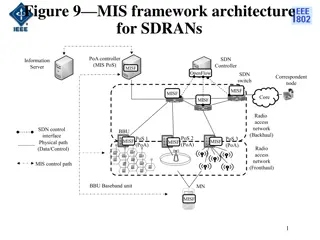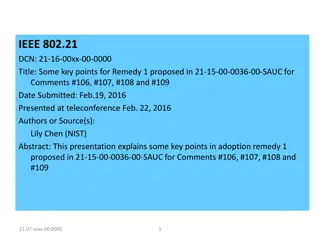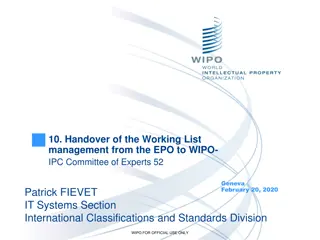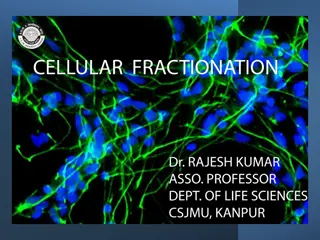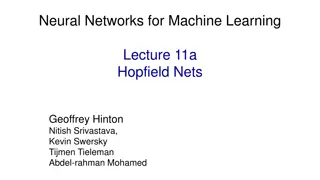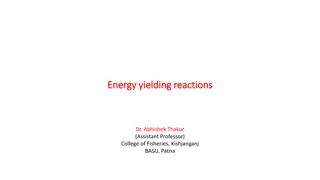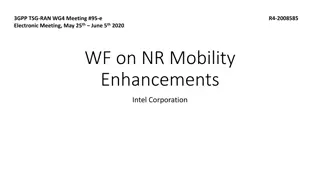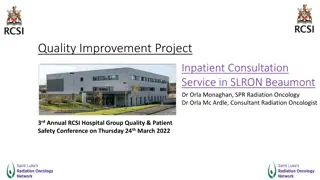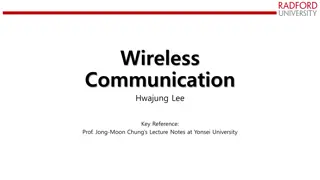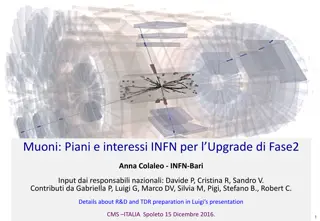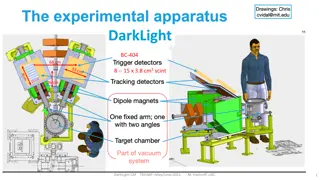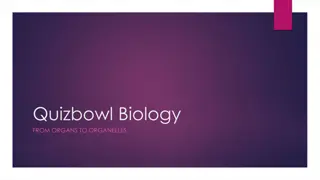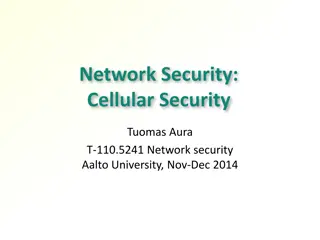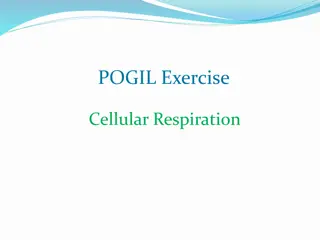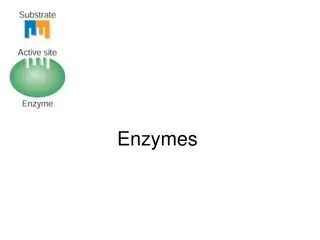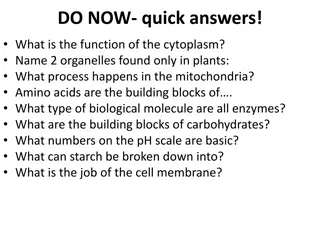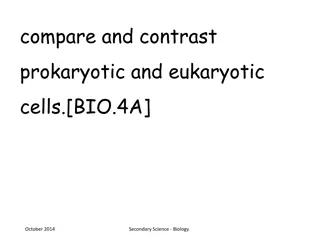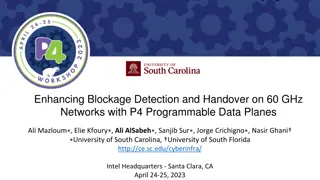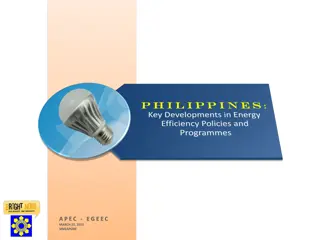Energy-Efficient Handover Triggering for Cellular Networks
Mobile devices play a crucial role in today's world, with a surge in mobile subscriptions and applications. However, energy consumption, particularly battery life, remains a challenge. The study focuses on Application-Based Handover Triggering (AHT) as a solution to optimize energy usage in cellular networks. It explores the motivations behind this research, the impact of battery constraints on mobile devices, and the need to bridge the gap between heterogeneous cellular networks and various applications. Measurement studies are conducted to evaluate energy efficiency across different cellular technologies and devices.
Download Presentation

Please find below an Image/Link to download the presentation.
The content on the website is provided AS IS for your information and personal use only. It may not be sold, licensed, or shared on other websites without obtaining consent from the author. Download presentation by click this link. If you encounter any issues during the download, it is possible that the publisher has removed the file from their server.
E N D
Presentation Transcript
AHT: Application-Based Handover Triggering for Saving Energy in Cellular Networks Di Zhang, Yuezhi Zhou, Xiang Lan, Yaoxue Zhang, Xiaoming Fu 2018-06-12 IEEE SECON 2018
Table of Contents Motivation Measurement Studies AHT: Application-Based Handover Triggering Application Classification Upward Handover Downward Handover Evaluation Results Conclusions and Future Works IEEE SECON 2018 2
Motivation Mobile devices are ubiquitous and indispensable Mobile subscriptions are large and increase fast Mobile applications are increasingly popular 9 350 8 300 Total Amount (Billions) Number of App 7 Total APP (Ten Thousands) 250 6 World population 5 200 Mobile subscriptions 4 150 3 Mobile broadband subscriptions 2 100 1 50 0 0 Jun-15 Jun-10 Jun-11 Jun-12 Jun-13 Jun-14 Jun-16 Jun-17 Jun-18 Dec-10 Dec-11 Dec-12 Dec-13 Dec-14 Dec-15 Dec-16 Dec-17 Source: ITU World Telecommunication / ICT Indicators database Note: *Estimate Source: http://www.pocketgamer.biz IEEE SECON 2018 3
Motivation Battery is a bottleneck of mobile devices Cellular data communication is a significant source Web Browsing (hours) 0 5 10 15 20 25 30 35 Gionee Marathon M5 Energy Breakdown Asus Zenfone Max Cellular Xiaomi Redmi 4 Prime 13% CPU Xiaomi Mi Max 7% RAM Xiaomi Mi Max 2 44% 4% Graphics Xiaomi Redmi Note 4 LCD Oppo F5 14% Backlight Lenovo P2 Huawei Mate 8 Others 4% 14% Huawei Ascend Mate2 Source: http://www.gsmarena.com/battery-test.php3 IEEE SECON 2018 4
Motivation Various heterogeneous cellular networks GSM, UMTS, LTE, etc. Miscellaneous applications need data access Instant messaging, social networking There is a barrier between heterogeneous cellular networks and applications IEEE SECON 2018 5
Measurement Studies To understand the barrier between heterogeneous cellular networks and applications Measurement configurations Cellular networks EDGE, UMTS, and LTE Mobile device HTC M8 (equipped with a battery fuel gauge) Tool EnergyTool (http://github.com/dizhang/EnergyTool) Get voltage and current from /sys/class/power_supply IEEE SECON 2018 6
Measurement Studies Energy consumption with different cellular networks An energy state machine exists in each data transmission EDGE UMTS LTE EDGE: limited bandwidth long transmission time UMTS: long promotion time high latency LTE: long tail time much energy consumed in tail time IEEE SECON 2018 7
Measurement Studies Energy consumption with different data size EDGE is difficult to meet the requirements of modern applications. UMTS is more energy efficient than LTE. IEEE SECON 2018 8
Measurement Studies Impact of the cellular network type on applications Application Network Type Time (ms) Energy (mJ) EDGE 5626.4 4823.6 UMTS 2506.3 4537.0 Email checking LTE 436.8 11474.3 EDGE 117067.6 163917.9 Web page loading UMTS 5879.4 35614.6 LTE 3511.4 44425.3 There is no direct interaction between heterogeneous cellular networks and various applications, which leads to the high energy The cellular network type exerts a crucial influence on energy consumption and performance of applications. consumption of cellular data transmissions. IEEE SECON 2018 9
AHT: Overall Idea Divide heterogeneous cellular networks high performance networks with high bandwidth energy-efficient networks with low energy consumption Classify various applications UX-sensitive ones that affect the user experience UX-insensitive ones that do not affect the user experience An ideal situation UX-sensitive data high-performance network UX-insensitive data energy-efficient network AHT triggers handovers based on applications IEEE SECON 2018 10
Challenges How to determine whether an application is UX- sensitive or UX-insensitive? Various users Configurable How to trigger handovers to the high-performance network? Reduce the impact of handover delay How to trigger handovers to the energy-efficient network? Reduce the number of back-and-forth handovers IEEE SECON 2018 11
Application Classification AHT classifies applications through user preferences To meet the requirements of various users Configurable Appropriate default values are set to reduce the complexity of using AHT Common UX-sensitive applications are set in default A whitelist is used to determine UX-sensitive applications Applications that are not in the list are regarded as UX- insensitive IEEE SECON 2018 12
Upward Handover Upward handover refers to the handover to the high-performance network Application prediction based handover triggering AHT triggers the upward handover before a UX-sensitive application is used based on application prediction Two problems How to predict the next application? When to trigger upward handover? IEEE SECON 2018 13
Upward Handover Decision Requirements of applications prediction Low training overhead Adapt to various users and rapidly changing user habits Prediction by partial match (PPM) Use the prefix character sequence to calculate the conditional probability of the next character Handover decision R={a1, , an} is the UX-sensitive application set, Pnext={a1, , am} is a set of applications that may be used as the next ai R,ai Pnext, and the network is not the high-performance network, AHT prepares to trigger a handover IEEE SECON 2018 14
Upward Handover Time Time ui1 ui2 uii uij uin h2 hi h1 hj hn Historical UI probability PPM CDF = { , h h ,..., } H h 1 2 n To ensure that all historical handovers for a will be conducted before a is used UI U next a F APPM|next a p = I| = = 1(min( UI F )) t H = ( ) ( ) F t APPM| p UI next a F t = = I | U next a The conditional cumulative distribution function of a that a will be used within t period = min( ) t T aht IEEE SECON 2018 15
Upward Handover The upward handover algorithm IEEE SECON 2018 16
Downward Handover Downward handover refers to the handover to the energy-efficient network Immediate handover at the end use of a UX- sensitive application Interruption of in-progress data transmission Incur back-and-forth handovers AHT employs an idle timer to trigger handovers to the energy-efficient network Similar to the inactivity time in radio resource control protocol IEEE SECON 2018 17
Downward Handover The downward handover algorithm IEEE SECON 2018 18
Performance Evaluation Data sets and configurations Application usage data from the LiveLab in Rice University Parameters are obtained through measurement studies Performance metrics Energy consumption Number of total handovers Proportion of data transmissions with high latency Comparison Pure network: UMTS and LTE Auto: signal strength based handover Intelli3G: screen status based handover IEEE SECON 2018 19
Evaluation Results Energy consumptions of data transmission for different users Compared with the pure LTE network, AHT saves up to 60.7% and at least 36.9% energy consumption Compared with Intelli3G, AHT saves up to 32.8% and at least 12% energy consumption IEEE SECON 2018 20
Evaluation Results Number of total handovers Compared with Auto and Intelli3G, AHT reduces the number of handover by an average of 62.3% and 42.4%, respectively IEEE SECON 2018 21
Evaluation Results Proportion of data transmissions with delay more than 2 seconds The proportion of UMTS is the highest Compared with Intelli3G, AHT increases the proportion by an average of 8.4% due to application prediction errors IEEE SECON 2018 22
Conclusions and Future Works AHT: Application-Based Handover Triggering Clarify the barrier between heterogeneous cellular networks and applications Propose an application-based handover triggering method Based on practical application usage traces, we evaluate the performance of AHT and show its better performance Future Works Integrating AHT with existing handover protocols Dynamic idle timer IEEE SECON 2018 23
Thank you! Q & A IEEE SECON 2018 24
